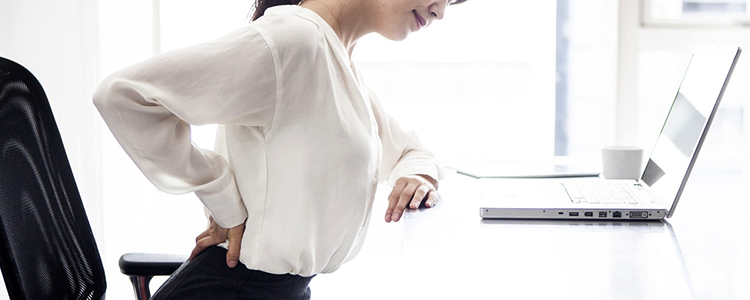- For SME and Groups
- For Individuals
Group Health Insurance
About Cigna Healthcare
How work-related stress affects employee health and productivity
How work-related stress affects employee health and productivity
'Always on' is not always good
Stress has been defined as a ‘global epidemic’ that is a ‘silent killer’ by the United Nations International Labor Organisation (ILO). This phenomenon is especially prominent in Asian countries with advanced economies and western consumerism, such as Singapore, Taiwan, Hong Kong and China. The research that we have also backs this up, with the 2019 Cigna 360 Well-Being Survey findings indicating that 92% of employed respondents in Singapore are stressed - much higher than the global average of 84%1.
Further emphasising the prevalence of work-related stress is the statistic that 80% of people in Asia work in an ‘always on’ environment2. The rise of the ‘always on’ culture points toward the tendency for people to be connected with their work, social contacts and news feeds, 24 hours a day, 7 days a week. In turn, this has a significant impact on their physical and mental health.
Depending on the country, approximately 4-19% of national health spending can be attributed to stress-related and stress-induced conditions. To put this into perspective, this proportion translates to one of the single largest area of expenditure facing healthcare systems today3. It goes without saying that work-related stress has and is becoming a significant burden on our health systems, at a time when they are already overstretched. Costs are expected to continue rising, with Singapore’s healthcare cost of stress alone hitting a whopping US$2.3 billion4. In reality, the true cost of work-related stress can be far greater, thanks to lower productivity, high turnover rates, and the loss of capable talent. To truly understand how we can tackle this, we must first turn to the relationship between stress and health.
Stress and Mental Health
The most common form in which unmanaged day-to-day stress manifests itself is via employee burnout. Burnout is largely driven by the ‘always on’ digital workplace, amongst other reasons5 such as:
- Over-supervision
- Having too many priorities
- Unrealistic expectations of productivity
- Poor workplace relationships
- Lack of autonomy and recognition
- Unfulfilling work
- Harassment and discrimination
- Poor work-life balance
- Overly competitive work culture
As of 2019, the World Health Organisation (WHO) officially started to recognise burnout as an occupational phenomenon which may require care. They defined burnout as ‘a syndrome conceptualised as resulting from chronic workplace stress that has not been successfully managed’, and characterises it by three dimensions6:
1. Feelings of energy depletion or exhaustion
2. Increased mental distance from one’s job, or feelings of negativism or cynicism related to one’s job
3. Reduced professional efficacy
Over time, occupational burnout can develop into anxiety and workplace depression. Further stress may continue to worsen it, making employees even more unlikely to seek help. Some may even choose to hide it entirely to avoid stigma. Ultimately, the cumulation of all these can lead to a concerning pervasiveness of undetected mental health issues in the workplace.
Stress and Physical Health

While the immediate symptoms of stress are more easily recognisable, what is less understood is how stress can also manifest itself physically. In its early stages, stress shows up in the form of chronic issues, such as chest pain, back pain, fatigue and headaches. Other physical manifestations include circulatory problems, gastrointestinal problems and musculoskeletal pain7. More damning scientific evidence further links stress to cardiovascular diseases and various cancers, especially when it is not dealt with for a prolonged period of time8.
It is not uncommon for employees to miss the connection between stress and its effects on their physical health altogether. In fact, these symptoms are more often perceived as age-related problems than issues stemming from the mismanagement of stress. But because of our failure to recognise the root cause, we are wasting more resources on ineffective solutions, rather than using them for more cost-effective and targeted ones.
Stress and Productivity

Now that we’ve established that there is an inherent link between stress and health, it should come as no surprise that they also have a major impact on job performance and productivity. As we learn more about the cause and effect of work-related stress, many employers are re-examining how they determine employee value. Unfortunately, some still confuse productivity with attendance, believing that their most dedicated employees are those who are in the office longest, take the least amount of leave, and even show up when they are unwell. In other words, we are referring to the burgeoning phenomenon known as presenteeism.
As Dr. Peter Mills, the medical director of Cigna Europe, expounded - presenteeism promotes the wrong priorities. Employees are led to believe that their work is more important than their health, and that mental health concerns are not legitimate reasons for medical leave. In more extreme cases, they can put aside their mental and physical health problems entirely to attend work, fearing that they may lose their position or their reputation otherwise. Cigna’s 360 Wellbeing Survey in 2018 found that almost 70% of global employees go to work when ill or burned out, even though this causes their productivity to drop by approximately 21% while further delaying their chances of recovery9.
To employers, presenteeism can seem to incur lower direct costs due to the reduction of medical leave taken. However, the phenomenon accounts for an even greater productivity loss due to its pervasiveness and the corresponding lack of treatment. These are the indirect costs that have been largely invisible to employees, with on-the-job productivity loss resulting from depression and pain being roughly three times greater than absence-related productivity loss10.
Tackling and Preventing Work-related Stress

To address chronic stress in the workplace, we must first understand our cultural perception of it. Even today, mental health remains a taboo in many countries, including Singapore. In these places, it is more culturally acceptable for people to seek help for physical health issues rather than for mental ones. Being able to break these taboos will likely mean that people will be more willing to seek help, and to do so earlier. This will go a long way in reducing the impact and the cost of stress.
One way of countering the pre-existing perception of mental health is to cultivate and foster a more supportive one within the workplace itself. In doing so, it will be helpful to keep in mind Cigna’s idea of ‘Whole Person Health’. This mainly consists of a tripartite approach11:
- Employers need to create safe and supportive environments for staff
- Employees should do their best to recognise the impact their lifestyles have on their mental and physical wellbeing
- Healthcare professionals need be aware of their patients’ interconnected physical and mental health – both body and mind – before they reach for the prescription pad
For employers, this means prioritising the wellness of your employees, which can be accomplished in many ways. Listening to their needs and gathering more data, for instance, will allow you to do away with cookie-cutter workplace wellness programmes in favour of more customised and effective ones. Of course, this hinges on the condition that there is enough trust amongst your employees for there to be honest and open communication. Building this trust will take time, but it can only help to encourage more valuable feedback in the future to further identify and target the issues that are relevant to your company.
For employees, contributing to the idea of ‘Whole Person Health’ would mean evaluating and adjusting your lifestyles as necessary. Staying active and engaged through physical and mindfulness activities such as exercise and meditation is one of the best treatments for chronic stress. If neglected, it could do more harm by triggering negative coping mechanisms, such as poor eating and drinking habits, in turn causing more negative emotions to form a vicious cycle.
For healthcare professionals, being more conscious of ‘Whole Person Health’ means recognising that mental and physical health go hand in hand. One has to be aware of the patient’s mental state in order to properly diagnose and treat stress-related symptoms. Normalising therapy and having well-trained medical experts can play a big role in reducing stigma to encourage open communication for more effective treatments.
Ultimately, the general idea is that we have to spend in order to save. While this sounds contradictory, a 2017 National Council of Social Service study found that for every S$1 invested in workplace adjustments, an average of S$5.60 was yielded in return12. In other words, pro-mental health actions such as providing access to counselling and allowing for flexible work arrangements resulted in gains including reduced absenteeism, reduced medical claims, improved morale, and higher productivity.
Get a Quote Today
Let our consultants prepare and arrange a customised group health insurance plan that best meets your needs.
Over to you
Although work-related stress is unavoidable, we believe that through better awareness, response and diagnosis, we can help people live happier, healthier, and more productive lives. We need employers to create and cultivate environments that are conducive for open communication, so that employees can feel safe in being honest about their mental welfare, and in asking for help when they are suffering from chronic stress. Such shifts in company culture, from encouraging wellness conversations to specifically tailored programs, is vital for the health of any business, and can further drive the company’s success in the long run. This way, everybody wins.
Sources:
1 Cigna. (2019). 2019 Cigna 360 Well-Being Survey: Well & Beyond.
2Cigna (2019). Chronic Stress: Are we reaching health system burn out?.
3 Cigna (2019). Chronic Stress: Are we reaching health system burn out?.
4 Cigna (2019). Chronic Stress: Are we reaching health system burn out?.
5 Garton, E. (2017). Employee Burnout Is a Problem with the Company, Not the Person. Harvard Business Review.
6 World Health Organisation. (2019). Burn-out an "occupational phenomenon": International Classification of Diseases.
7 Cigna (2019). Chronic Stress: Are we reaching health system burn out?
8 Singapore Business Review. (2017). 72% of Singapore firms affected by workers' mental stress.
9 Mills, P. (2019). Building a Whole Person Health Approach to Chronic Stress at Work. Cigna.
10 Hemp, P. (2004). Presenteeism: At Work—But Out of It. Harvard Business Review.
11 Mills, P. (2019). Building a Whole Person Health Approach to Chronic Stress at Work. Cigna.
12 The Business Times. (2019). Casting light on workplace depression.
Related articles
Contact Us
Popular Links
Resources
Connect with us
© Cigna Healthcare. All rights reserved.
Cigna Europe Insurance Company S.A.-N.V. Singapore Branch (Registration Number: T10FC0145E), is a foreign branch of Cigna Europe Insurance Company S.A.-N.V., registered in Belgium with limited liability, with its registered office at 152 Beach Road, #33-05/06 The Gateway East, Singapore 189721.
The Cigna Healthcare name, logo, and other Cigna Healthcare marks are owned by The Cigna Group Intellectual Property, Inc. licensed for use by Cigna Corporation and its operating subsidiaries. All products and services are provided by or through such operating subsidiaries, and not by Cigna Corporation. Such operating subsidiaries include Cigna Europe Insurance Company S.A.-N.V. Singapore Branch.

